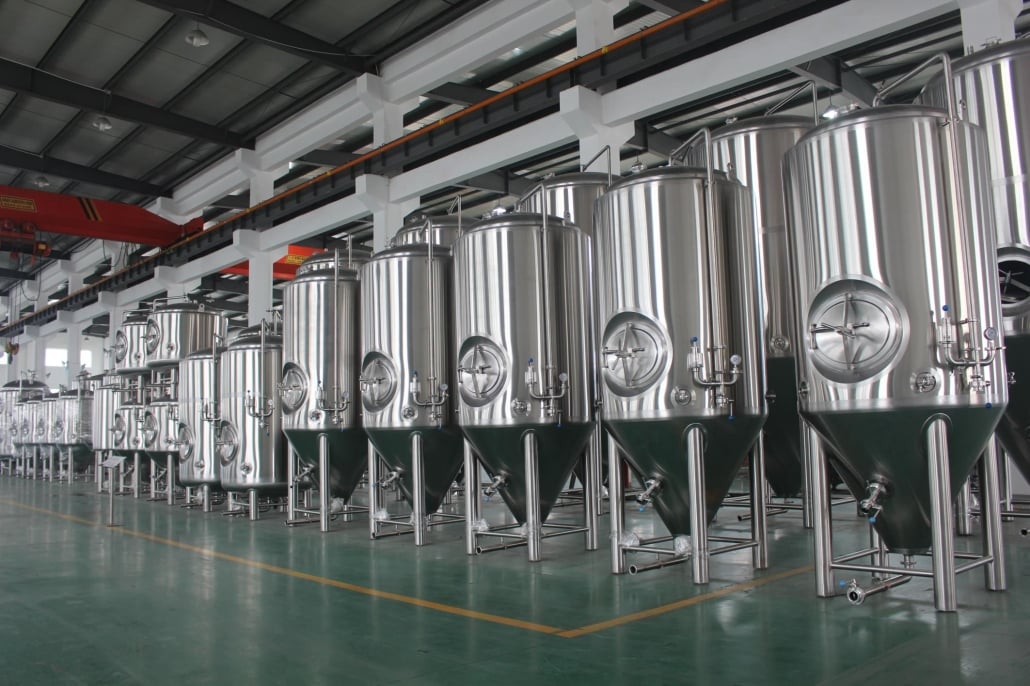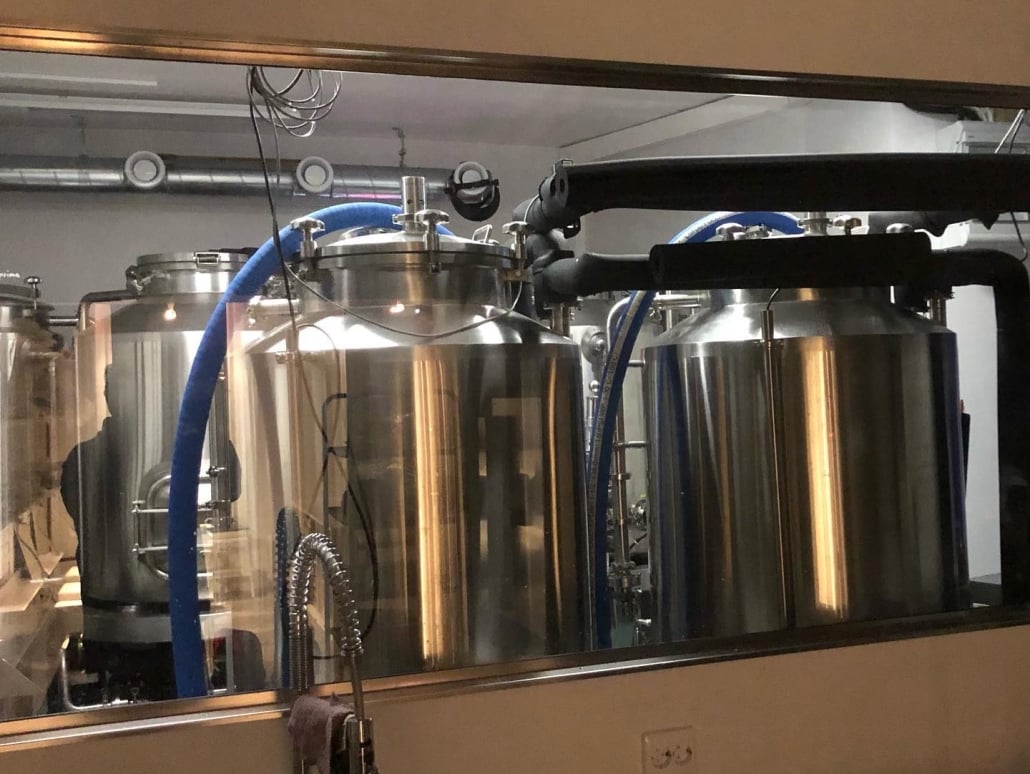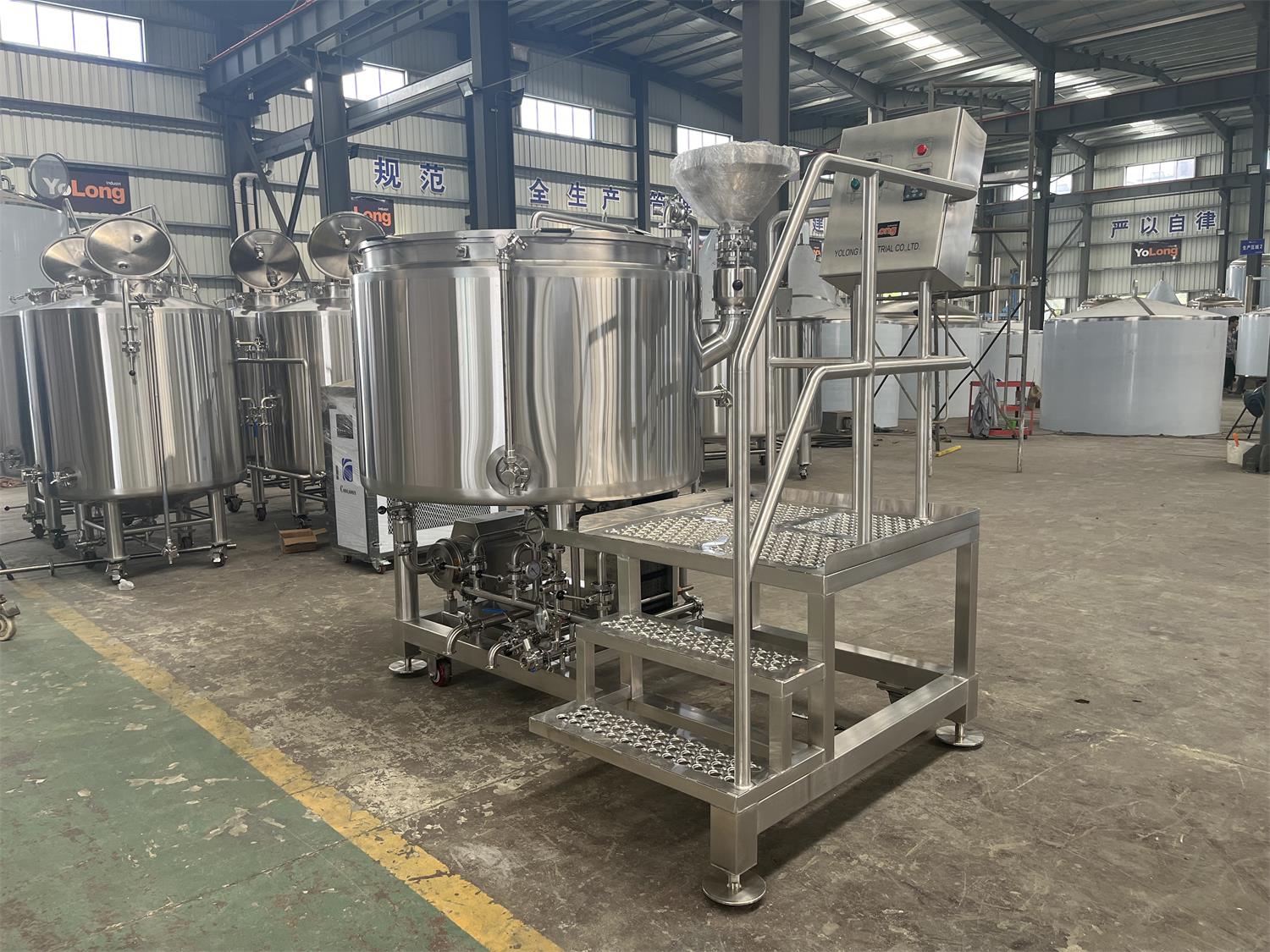Wine Making Tanks: The Essential Guide
Overview of Wine Making Tanks
Wine making is an art that marries science and tradition, and the vessel you use for fermentation can significantly impact the final product. From ancient clay amphorae to modern stainless steel tanks, the choice of a fermentation vessel affects the taste, texture, and aroma of the wine. This guide dives deep into the world of wine making tanks, exploring different types, their advantages, and how to choose the best one for your needs.
Types of Wine Making Tanks
Wine making tanks come in various forms, each offering unique benefits and drawbacks. The primary types include stainless steel tanks, oak barrels, concrete tanks, and plastic fermenters.
Stainless Steel Tanks
Stainless steel tanks are the modern winemaker’s go-to option. They are versatile, durable, and easy to clean. These tanks allow precise temperature control, which is crucial for maintaining the integrity of the wine during fermentation. Additionally, stainless steel tanks do not impart any flavors to the wine, preserving the pure characteristics of the grape.
Oak Barrels
Oak barrels have been used for centuries and are cherished for the distinct flavors they impart to the wine. Aging wine in oak barrels can add complexity, including notes of vanilla, spice, and caramel. However, oak barrels are labor-intensive, expensive, and have a limited lifespan compared to stainless steel tanks.
Concrete Tanks
Concrete tanks offer a middle ground between stainless steel and oak. They provide micro-oxygenation, similar to oak barrels, but without imparting woody flavors. These tanks are praised for the minerality they can add to the wine. However, they are heavy, difficult to move, and can be challenging to clean.
Plastic Fermenters
Plastic fermenters are the most economical option and are popular among amateur winemakers. While they are lightweight and easy to handle, plastic fermenters can be prone to scratching, which can harbor bacteria and affect the wine’s quality. They also have a shorter lifespan compared to other materials.

Equipment Guide for Wine Making
Investing in the right equipment is crucial for successful wine making. Here’s a detailed guide on essential wine making equipment:
Fermentation Vessels
- Stainless Steel Tanks: Durable, easy to clean, and offer precise temperature control.
- Oak Barrels: Enhance flavor complexity, but require more maintenance.
- Concrete Tanks: Provide micro-oxygenation without woody flavors, but are heavy and hard to clean.
- Plastic Fermenters: Economical and lightweight, but less durable.
Ancillary Equipment
- Airlocks and Bungs: Essential for sealing fermentation vessels and allowing CO2 to escape.
- Pumps: Used for transferring wine between vessels.
- Presses: Extract juice from grapes post-fermentation.
- Cleaning Supplies: Sanitizers and brushes to maintain equipment hygiene.
Comparative Table of Wine Making Tank Types
| Tank Type | Material | Flavor Influence | Durability | Maintenance | Cost Range |
|---|---|---|---|---|---|
| Stainless Steel | Metal (Stainless) | None | High | Low | $1,000 – $10,000 |
| Oak Barrels | Wood (Oak) | High | Medium | High | $500 – $2,500 |
| Concrete Tanks | Concrete | Minimal | High | Medium | $2,000 – $15,000 |
| Plastic Fermenters | Plastic | None | Low | Medium | $50 – $500 |
Detailed Wine Making Process
Understanding the wine making process is essential for choosing the right equipment. Here’s a breakdown of the steps involved:
1. Harvesting
Grapes are handpicked or machine harvested, ensuring they are at optimal ripeness.
2. Crushing and Pressing
The grapes are crushed to release their juice. For white wines, pressing happens immediately, while red wines undergo maceration first.
3. Fermentation
The juice is transferred to fermentation tanks where yeast is added. The yeast converts sugars into alcohol and carbon dioxide.
4. Clarification
Post-fermentation, the wine is clarified through racking, filtration, or fining to remove solids.
5. Aging
The wine is aged in tanks or barrels to develop flavors. Stainless steel tanks preserve fresh, fruity notes, while oak barrels add complexity.
6. Bottling
Once the desired maturity is reached, the wine is bottled and sealed for distribution.
Capacity, Space, Design, and Customization of Wine Making Tanks
Choosing the right tank involves considering your production scale, available space, design preferences, and customization needs.
| Parameter | Details |
|---|---|
| Capacity | Ranges from 5 gallons for small-scale home brewing to several thousand gallons for commercial use. |
| Space | Stainless steel tanks and plastic fermenters are compact. Concrete tanks require more space. |
| Design | Options include cylindrical, conical, and rectangular designs, each offering different benefits. |
| Customization | Tanks can be customized with temperature control systems, agitators, and specialized coatings. |
Wine Making Tank Suppliers and Price Range
Choosing a reputable supplier ensures quality and reliability. Here’s a comparison of some leading suppliers and their price ranges:
| Supplier | Tank Type | Price Range |
|---|---|---|
| Blichmann Engineering | Stainless Steel | $1,200 – $7,000 |
| Speidel | Plastic | $100 – $400 |
| Wine Enthusiast | Oak Barrels | $400 – $2,000 |
| Sonoma Cast Stone | Concrete | $2,500 – $10,000 |
Installation, Operation, and Maintenance of Wine Making Tanks
Proper installation, operation, and maintenance are vital for optimal performance and longevity of wine making tanks.
| Aspect | Details |
|---|---|
| Installation | Requires professional setup, especially for large tanks. Ensure a stable, level base and proper connections. |
| Operation | Follow manufacturer guidelines for temperature control, cleaning, and fermentation processes. |
| Maintenance | Regular cleaning with appropriate sanitizers. Inspect for wear and repair or replace parts as needed. |
How to Choose the Right Supplier
Selecting the right supplier is crucial for securing quality tanks and reliable customer support.
| Criteria | Details |
|---|---|
| Reputation | Look for suppliers with positive reviews and a history of reliability. |
| Quality Assurance | Ensure the supplier adheres to industry standards and offers warranties. |
| Customer Support | Responsive and helpful customer service can assist with installation and troubleshooting. |
| Price | Compare prices but don’t compromise on quality for cost. |
Comparing Pros and Cons of Different Wine Making Tanks
Each type of wine making tank offers distinct advantages and limitations:
| Tank Type | Advantages | Disadvantages |
|---|---|---|
| Stainless Steel | Durable, easy to clean, precise temperature control | Higher initial cost compared to plastic |
| Oak Barrels | Adds complexity to flavor, tradition-rich | Expensive, labor-intensive, limited lifespan |
| Concrete Tanks | Adds minerality, micro-oxygenation | Heavy, difficult to clean, higher cost |
| Plastic Fermenters | Economical, lightweight | Prone to scratching, shorter lifespan |

FAQs
| Question | Answer |
|---|---|
| What is the best material for wine making tanks? | Stainless steel is often preferred for its durability and ease of use, but oak and concrete offer unique benefits. |
| How do I clean a wine making tank? | Use appropriate sanitizers and brushes. Stainless steel is the easiest to clean. |
| Can plastic fermenters affect wine quality? | Yes, scratches can harbor bacteria, impacting wine quality. |
| What size tank do I need for small-scale production? | Small-scale producers can start with 5-20 gallon tanks. |
Conclusion
Choosing the right wine making tank is a critical decision that affects the quality and character of your wine. By understanding the different types of tanks, their advantages and disadvantages, and how to maintain them, you can make an informed choice that suits your wine making needs. Whether you opt for the modern convenience of stainless steel, the traditional appeal of oak, or the unique qualities of concrete, the right tank will help you craft exceptional wines.
Additional FAQs About Wine Making Tanks
- How do temperature control options differ across wine making tanks?
- Stainless steel tanks often include glycol jackets and precise PID controls, ideal for aromatic whites and controlled reds. Concrete provides thermal inertia (stable temps but slower changes). Oak and plastic rely on ambient control or external jackets.
- What surface finish and cleanliness standards should I look for in stainless wine tanks?
- For hygiene and ease of CIP, specify internal surface roughness ≤0.8 µm Ra and fully passivated welds. For sparkling or sterile bottling programs, consider electropolishing.
- Are concrete tanks compatible with all wine styles?
- They excel with varieties benefiting from micro-oxygenation and texture (e.g., Chardonnay, Grenache). For highly reductive styles or bright aromatics, stainless steel is usually preferred to avoid unwanted oxygen ingress.
- Can I safely pressure-ferment or carbonate in wine making tanks?
- Only in pressure-rated vessels (e.g., pressure-capable stainless “unitanks”). Verify MAWP, pressure relief valves, and relevant certifications (ASME/CE). Standard wine tanks and concrete/oak vessels are typically non-pressurized.
- How do I size a tank relative to grape intake and headspace needs?
- Aim for tank working volume at 80–90% of nominal to allow cap rise and foam during primary fermentation. For reds, allow extra headspace or use variable-cap lids/float tops to manage oxygen exposure during maceration and aging.
2025 Industry Trends: Wine Making Tanks
- Precision fermentation at scale: Mid-sized wineries retrofit stainless tanks with multi-zone jackets and in-tank sensors (Brix, temp, turbidity) for tighter ferments and labor savings.
- Sustainability focus: Heat recovery from must cooling, variable-speed pump integration, and water-saving CIP programs cut energy and water per liter of wine.
- Hybrid cellars: Increasing use of mixed cellars—stainless for primary fermentation and concrete/neutral oak for maturation—to balance purity with texture.
- Micro-oxygenation and oxygen management: Greater adoption of inline DO meters and inert gas management; variable-cap tanks with improved seals for small-lot flexibility.
- Regulatory and export readiness: More facilities align with FSMA/HACCP documentation, 3-A/EHEDG hygienic practices, and traceability sensors to ease audits and global sales.
2024–2025 Benchmarks and Costs (North America/EU)
| Metric | 2024 Typical | 2025 YTD Typical | Change | Notes |
|---|---|---|---|---|
| 5,000 L stainless wine tank (jacketed) | $8,500–$12,500 | $9,200–$13,800 | +6–10% | Controls/steel/freight inflation |
| Concrete egg (1,600–2,000 L) | $6,500–$12,000 | $6,800–$12,800 | +3–5% | Freight and finishing |
| Neutral oak barrel (225 L) | $350–$700 | $380–$780 | +5–8% | Supply variability |
| Water used per CIP cycle (10–20 kL tanks) | 220–380 gal | 180–320 gal | −10–20% | Nozzle optimization/reuse |
| Wineries monitoring DO at racking | 41% | 52% | +11 pts | QA investment up |
Sources: OIV and wine industry trade reports; Brewers/Winegrowers Associations’ sustainability toolkits; U.S. EIA energy insights; vendor catalogs (Speidel, Letina, Sonoma Cast Stone). References: https://www.oiv.int/en, https://www.wineinstitute.org/, https://www.eia.gov/, representative manufacturer datasheets.
Latest Research Cases
Case Study 1: Multi-Zone Jacketed Stainless Tanks Improve Aromatic Retention (2025)
- Background: A coastal winery producing Sauvignon Blanc struggled with volatile thiol loss and temperature spikes during peak harvest.
- Solution: Installed stainless tanks with two-zone glycol jackets and inline temperature/DO sensors; implemented staged cooling (18°C to 13°C over 48 hours) and inert gas cap management.
- Results: Peak ferment temps reduced by 2.4°C; free SO2 usage down 9%; thiol markers (3MH/3MHA) increased by 12–15% vs. prior vintage; sensory panel reported fresher tropical aromatics.
Case Study 2: Water and Energy Savings via CIP Optimization on Wine Tanks (2024)
- Background: A mid-size producer sought to reduce cellar utilities during harvest turnover.
- Solution: Switched to rotary jet heads, enzyme-boosted caustic at lower temp, and rinse water recovery for pre-rinse; added conductivity endpoints to stop cycles automatically.
- Results: CIP water per tank down 23%; caustic consumption down 18%; kWh per CIP down 14%; cleaning time cut by 17% with no increase in ATP failure rates.
References: OIV cleaning and sanitation guidance; EHEDG hygienic design notes; industry conference proceedings (Unified Wine & Grape Symposium). See https://www.ehedg.org and https://www.unifiedsymposium.org.
Expert Opinions
- Dr. Anita Oberholster, Cooperative Extension Enologist, UC Davis
- Viewpoint: “Temperature control and oxygen management are the two levers that most consistently improve wine quality in stainless tanks—sensor visibility and disciplined racking practices are indispensable.”
- Jean Hoefliger, Winemaker and Consultant (Alpha Omega, The Debate)
- Viewpoint: “Concrete gives mid-palate texture without wood imprint, but it demands rigorous sanitation and stable cellar humidity—mix it with stainless to keep aromatics intact.”
- Dr. Federico Casassa, Associate Professor of Enology, Cal Poly
- Viewpoint: “Tank choice should follow wine style: reductive whites favor stainless with tight DO control; structured reds can benefit from concrete or large neutral oak where micro-oxygenation polishes tannins.”
Practical Tools and Resources
- OIV (International Organisation of Vine and Wine) standards and guidelines: https://www.oiv.int/en
- UC Davis Winemaking Extension (technical bulletins, calculators): https://wineserver.ucdavis.edu
- Wine Australia—Winemaking resources (oxygen management, hygiene): https://www.wineaustralia.com
- Unified Wine & Grape Symposium proceedings: https://www.unifiedsymposium.org
- EHEDG hygienic design guidance (equipment cleanability): https://www.ehedg.org
- Dissolved oxygen and QA instruments (Anton Paar; Hach): https://www.anton-paar.com, https://www.hach.com
- Tank manufacturers and specs (Letina; Speidel; Sonoma Cast Stone): https://www.letina.com, https://www.speidels-hausgeraete.de, https://www.sonomastone.com
On-page SEO tip: Use keyword variations—“wine making tanks,” “stainless steel wine tanks,” “concrete wine tanks,” “oak barrel aging”—in H2s and image alt text; interlink to pages on glycol chillers, CIP systems, and oxygen management to strengthen topical authority.
Last updated: 2025-09-09
Changelog: Added 5 FAQs; 2025 trends with benchmark table; two recent case studies; expert viewpoints; curated tools/resources; SEO integration tip
Next review date & triggers: 2026-03-01 or earlier if OIV guideline updates, major energy price swings (±15%), or significant changes in tank/pricing from leading manufacturers
Share this entry
Interested in learning more about Brewing Systems including additional details and pricing information? Please use the form below to contact us!
YOLONG BREWERY EQUIPMENT FAQS
- Commercial Brewery / Craft Brewery / Microbrewery / Nanobrewery
- What is The Difference Between Craft Beer and Industrial Beer?
- The Bespoke Differences In Custom Brewing Systems
- Everything You Need to Know About Kettle Souring
- How to Choose Brewing Equipment for Your business?
- How To Choose The-Best Partner To Build Your Commercial Microbrewing System?
- Two Detection Sensors That You Need To Use In Your Brewhouse System
- Remote Control Applications in Brewing Equipment/How does it work?
- How To Clean Your Brand New Brewery Tanks?

